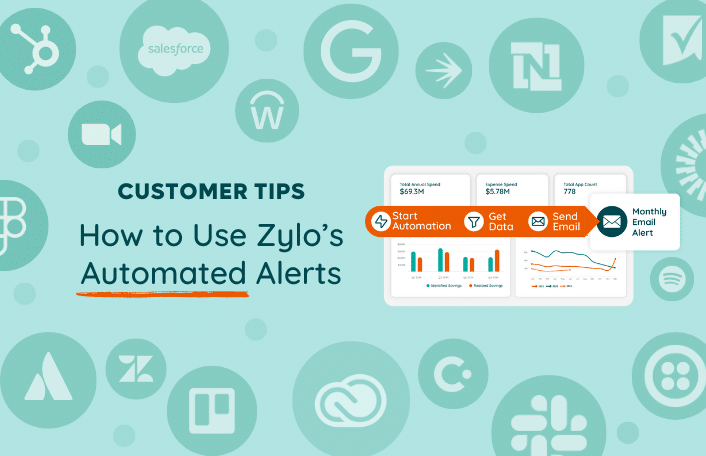
Usage-Based Pricing for SaaS: Benefit or Risk?
Table of Contents ToggleThe Cloud ForecastIs it Really “IT Asset Management?”...
Back
Back
Search for Keywords...
Blog

Table of Contents
It used to be the only things that required subscriptions were magazines and club memberships. Like most everything else, those things have gone digital now. And a whole host of products and services want their piece of the subscription pie. Anything you could possibly want now has a subscription option—groceries, razors, makeup, clothes, even weight loss. You can buy the air purifier, but not without the yearly subscription for filters delivered to your door each month.
The same applies in the business world, but with a wider pool of vendors and on a much larger scale.
The rise of tech in the workplace has given way to departments needing more SaaS-based tools using their own budget and at their own pace. It’s no longer realistic to require centralized purchasing. Yet, IT may be reluctant to give up purchasing freedom without having full visibility into the company’s entire tech stack—and rightly so. Without proper governance or a comprehensive view of SaaS use across the enterprise, everything from budgets and expenses to the increased need for tech support and security measures has increased the worry levels of IT leaders.
See, IT has a history when it comes to giving the reins to employees. You may have been in the game long enough to recall the days when software license auditing was feared by many an IT professional. The company would purchase a certain amount of licenses for necessary software like Microsoft only to find out later that hundreds more throughout the company were also using it, leaving IT with a hefty bill to contend with at the end of the year. While this scenario seems like a thing of the past in the digital era, it’s still a reality for companies with on-prem deployments. In fact, many large enterprises still have tons of on-prem software with shifting and uncertain timelines to move to the cloud.
Yet, as enterprises move to the cloud and IT teams put audits behind them, a new crop of challenges arise. Times may be changing, but instead of getting easier, the waters have only gotten muddier.
Bessemer Venture Partners recently released their 2021 State of the Cloud Report with insights on everything from the leading publicly traded companies (all venture-backed tech firms) to the emergence of voice technology/screenless devices to cloud trends and predictions. The main takeaway? The cloud roadmap is not only extensive, it’s multi-laned.
But with this expansion comes the need for more formal SaaS Management processes. Gartner reports that “software publishers switching to SaaS are reducing audit activity because their SaaS annuity models deliver more-reliable revenue growth, and built-in license management and access controls facilitate stronger compliance.” Unfortunately, this practice is making fear of SaaS app audits non-existent, creating potential budget and security implications down the road. The reality is that admin dashboards with real-time stats aren’t enough, as only the administrator can monitor the data and see utilization numbers. Plus, collecting this data in a spreadsheet to share with leaders is tedious and frankly unrealistic.
What enterprises need to stay ahead of the game is the ability to pull all administrative data behind a single pane of glass to bring visibility to the entire organization, manage and monitor active usage, and ensure the organization is getting the most out of each app.
Our own data at Zylo reveals that our customers have over $21B of annual SaaS investments managed in Zylo today. And 73% of that SaaS spend is found outside of known software expense types. Meanwhile, the average enterprise has discovered two to three times more SaaS and cloud applications than they think they have.
It’s not that IT leaders aren’t aware of what’s going on in their organization—far from it. The problem is that without a clear, comprehensive picture of tech usage throughout the company, acting as consultants and driving value back to the business becomes increasingly difficult. But given the right asset management tools, IT can have the full transparency and visibility to accurately advise the business on overarching strategies, apps with over- or underutilization, apps with overlapping functionality, and business units’ [increasingly complex] technology needs.
Luckily, the clouds are parting as a new era of IT asset management dawns.
The thing is, the term “IT asset management” accounts for all assets in your arsenal, both digital and physical. But SaaS isn’t really an asset in the traditional sense. Not like a mobile device or a laptop computer is. SaaS is much more fluid; living, breathing, constantly changing. “Software asset management” gets closer to the true meaning, but still doesn’t encompass all the moving parts IT professionals must account for—access to real-time usage across departments, licensing, multi-year contract agreements, auto-renewals, and more. Plus, SaaS apps go far beyond the IT department—and so should SaaS management. That’s why it’s time for a new category of asset management.
At Zylo, we give confidence back to IT and procurement teams by creating an enterprise-wide dashboard with a comprehensive view into all cloud and SaaS applications purchased throughout the organization. And with this ultra-transparency paired with a SaaS governance plan, it’s finally possible to effectively decentralize purchasing. With a clear picture of SaaS spending throughout the organization, Zylo allows you to work with the business instead of over it or against it.
Effective SaaS Management gives IT and finance leaders:
Armed with the right data to make better purchasing, management and governance decisions, Zylo provides IT teams with the ammunition they’ve always needed to become a value-based service consultant across the company instead of the department with red-tape and rules to enforce about who can purchase what technology.

Table of Contents ToggleThe Cloud ForecastIs it Really “IT Asset Management?”...

Table of Contents ToggleThe Cloud ForecastIs it Really “IT Asset Management?”...

Table of Contents ToggleWhat Is Automated Alerts?Old Alerts vs Automated AlertsAlert...

Table of Contents ToggleThe Cloud ForecastIs it Really “IT Asset Management?”...
| Cookie | Duration | Description |
|---|---|---|
| cookielawinfo-checkbox-analytics | 11 months | This cookie is set by GDPR Cookie Consent plugin. The cookie is used to store the user consent for the cookies in the category "Analytics". |
| cookielawinfo-checkbox-functional | 11 months | The cookie is set by GDPR cookie consent to record the user consent for the cookies in the category "Functional". |
| cookielawinfo-checkbox-necessary | 11 months | This cookie is set by GDPR Cookie Consent plugin. The cookies is used to store the user consent for the cookies in the category "Necessary". |
| cookielawinfo-checkbox-others | 11 months | This cookie is set by GDPR Cookie Consent plugin. The cookie is used to store the user consent for the cookies in the category "Other. |
| cookielawinfo-checkbox-performance | 11 months | This cookie is set by GDPR Cookie Consent plugin. The cookie is used to store the user consent for the cookies in the category "Performance". |
| viewed_cookie_policy | 11 months | The cookie is set by the GDPR Cookie Consent plugin and is used to store whether or not user has consented to the use of cookies. It does not store any personal data. |
